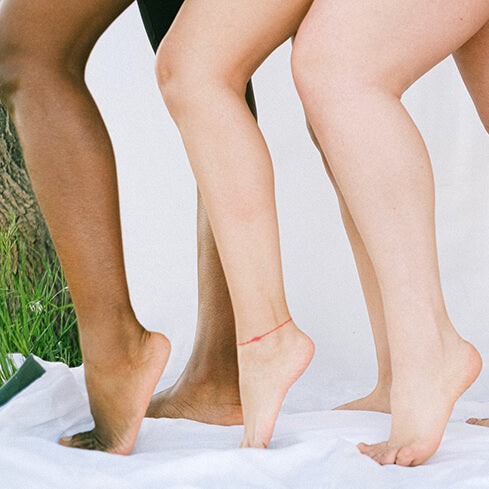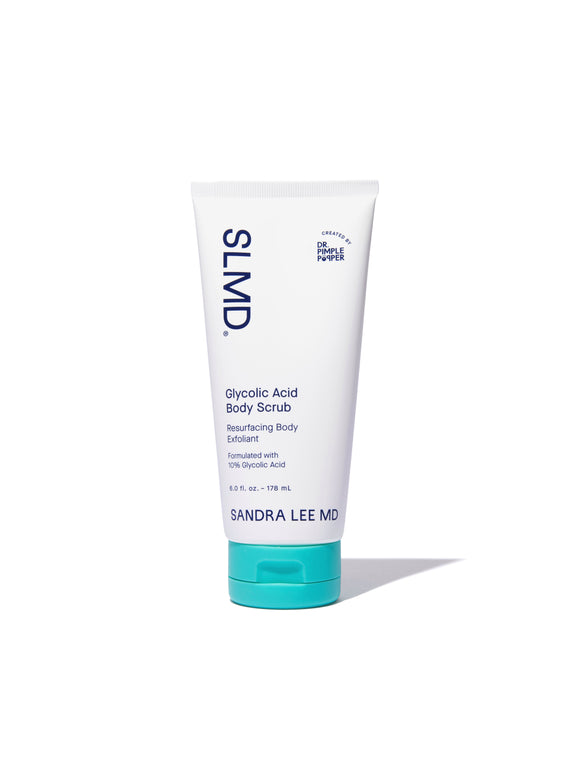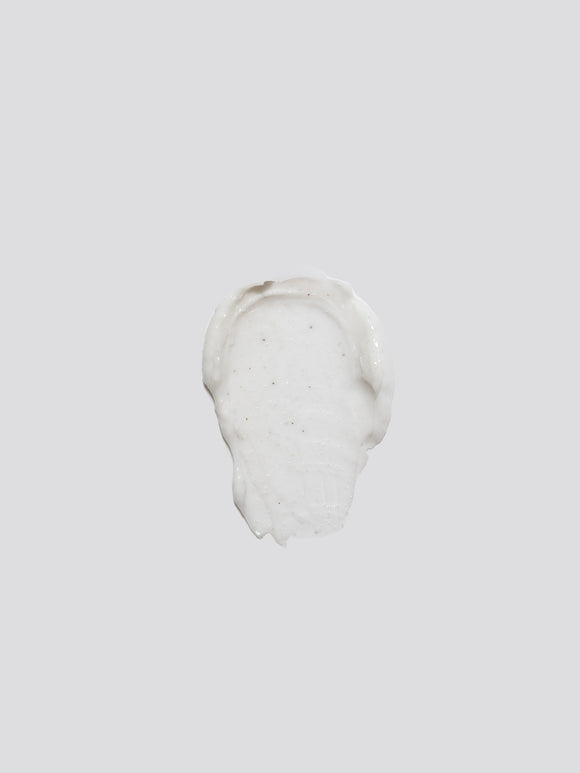
Why You Need Physical and Chemical Exfoliants for Keratosis Pilaris
Keratosis pilaris — aka chicken skin — is a common skin condition that causes a rough, bumpy, sandpapery texture. Here, we break down the best way to address the condition — and why it’s best to use both physical and chemical exfoliants, plus moisturizer, to combat keratosis pilaris.Published:
2 minute read
Keratosis pilaris — aka chicken skin — is a common skin condition that causes a rough, bumpy, sandpapery texture. Fortunately, it’s very manageable, with the right combination of exfoliants and moisturizers.
Here, we break down the best way to address the condition — and why it’s best to use both physical and chemical exfoliants to minimize keratosis pilaris.
What causes keratosis pilaris (KP)?
Keratin is the primary protein building block of both hair and skin. In people with keratosis pilaris, keratin becomes trapped within the pore containing the hair shaft and forms a plug. The plug of keratin creates a rough bump that can be skin color, or slightly red or brown. It closely resembles chicken skin, or the skin of a strawberry — hence the condition’s colloquial names.
Although scientists don’t know the exact reason why some people get keratosis pilaris, it is likely due to a combination of genetics and environment. The good news? People tend to grow out of it after it peaks during puberty — but if KP lingers, there are ways to minimize it.
What’s the best treatment for keratosis pilaris?
According to Dr. Sandra Lee (aka Dr. Pimple Popper), the best way to combat keratosis pilaris is with a two-pronged approach that includes a combination of physical and chemical exfoliants, followed by moisturizing. SLMD Skincare Body Smoothing System contains Glycolic Acid Body Scrub and Glycolic Acid Body Lotion to address rough skin and lock in moisture.

Why do you need physical and chemical exfoliants to treat keratosis pilaris?
Let’s back up and refresh the difference between physical and chemical exfoliation:
- Physical exfoliation uses mechanical means (think: textured particles, washcloth fibers, vibrating brushes or dermaplaning blades) to manually scrub off skin’s dead outer layers.
- Chemical exfoliation uses acids (most commonly, alpha or beta hydroxy acids) to loosen the bonds between dead skin cells so that they slough off more quickly.
With keratosis pilaris, it’s best to use a physical exfoliant — which sands off some of that built up keratin — as well as a chemical one that can penetrate into the pores and break up more keratin. The two types in combination complement each other for a better result. SLMD Skincare Glycolic Acid Body Scrub contains both a physical exfoliant and glycolic acid to address the buildup of keratin, dry skin, and ingrown hairs. This scrub formulated by Dr. Lee is powerful enough to knock out bumpy, rough skin, but gentle enough for everyday use.
And now, fan favorites Glycolic Acid Body Scrub and Glycolic Acid Body Lotion are both available in travel-ready, smaller sizes, perfect for first-time tries or stashing in your overnight bag.

Dr. Lee's Last Word
People who have dry, bumpy, keratosis pilaris-prone skin can benefit from using both a chemical AND physical exfoliant to help with serious bumpiness and texture. Along with treating keratosis pilaris-prone skin, it is great for fighting the buildup of keratin and minimizing dry skin and ingrown hairs.







